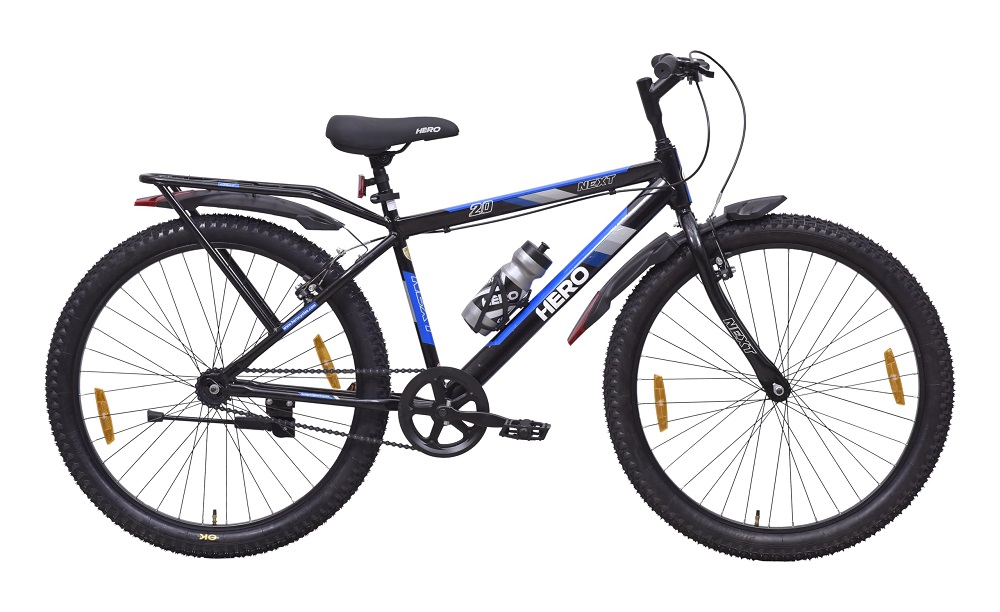Bicycles have played a significant role in shaping India’s social and economic landscape since their introduction in the early 1900s. Over the past century, the bicycle in India has evolved from being a luxury for the elite to becoming an essential mode of transportation for millions. Its journey has been marked by changes in design, technology, and purpose, reflecting the country’s growth and transformation. This article provides a comprehensive overview of the history of bicycles in India, from their modest beginnings to their current status as a sustainable transportation choice.
Early Beginnings: The Arrival of Bicycles in India (1900s-1930s)
Bicycles were first introduced to India by British colonizers in the early 1900s. Initially, they were considered a luxury item, accessible only to the wealthy elite and colonial officers. Imported from Europe, these bicycles were expensive, and owning one was a status symbol. The early models were heavy, made from steel, and had a basic design with a single-speed mechanism. Despite their simplicity, they quickly caught the public’s attention, becoming popular among Indians who could afford them.
During this period, cycling clubs and associations began to emerge in major cities like Bombay (now Mumbai), Calcutta (now Kolkata), and Madras (now Chennai). These clubs were primarily attended by the upper class, who saw cycling as both a leisure activity and a way to stay fit. However, the bicycle was still far from being a common sight on the streets of India.
The Post-Independence Era: Rise of the Indian Bicycle Industry (1940s-1960s)
After India gained independence in 1947, the government recognized the need for affordable transportation for its citizens. Bicycles became an ideal solution, and the government encouraged the development of the domestic bicycle industry. In the late 1940s and early 1950s, companies like Hero Cycles started manufacturing bicycles in India.
These companies produced affordable and durable bicycles tailored to the needs of the Indian population. Unlike the imported models, Indian bicycles were designed to withstand the country’s diverse terrain and climatic conditions. The production process focused on simplicity, sturdiness, and functionality, making bicycles accessible to the masses.
During the 1950s and 1960s, bicycles became a common sight across Indian cities and rural areas. They were primarily used for commuting to work, transporting goods, and running errands. Bicycles provided an economical and reliable means of transportation, particularly in rural areas where public transport was limited or non-existent. The “standard roadster,” a single-speed model with a sturdy steel frame, became the most popular type of bicycle in India during this period.
The Golden Era: Bicycle as a Primary Mode of Transportation (1970s-1980s)
The 1970s and 1980s marked the golden era for the bicycle in India. With rapid urbanization and the growth of industries, bicycles became an indispensable part of everyday life for millions of Indians. They were used not only for commuting but also for carrying goods and people. For many families, owning a bicycle was a source of pride and a significant investment.
During this period, the Indian bicycle industry grew exponentially. Companies like Hero Cycles became the largest bicycle manufacturer in the world by the 1980s, producing millions of bicycles annually. This growth was fueled by high demand, government support, and an expanding export market. Bicycles were not only seen as a mode of transportation but also as a tool for social mobility, allowing people to access education, employment, and healthcare.
Interestingly, this era also saw the rise in popularity of the “cycle for boys” segment. As bicycles became more accessible, young boys across India aspired to own their own bicycles. Manufacturers responded by creating models specifically designed for boys, featuring sporty designs, bright colours, and robust frames. These bicycles became a common gift for children, symbolizing freedom and independence.
Transition Period: The Advent of Motorized Transport (1990s-2000s)
The 1990s brought significant economic reforms to India, leading to an influx of foreign goods and a shift towards motorized vehicles. As cars and motorcycles became more affordable, bicycles began to lose their status as the primary mode of transportation. Urban areas, in particular, saw a decline in bicycle usage as people opted for faster and more comfortable options.
However, bicycles remained essential in rural areas and smaller towns, where public transportation infrastructure was still underdeveloped. Despite the growing preference for motorized vehicles, the demand for bicycles continued, especially among school-going children, delivery workers, and those who could not afford motorized transport.
During this time, Indian bicycle manufacturers began to innovate and diversify their product lines. New models with multiple gears, lighter frames, and advanced materials like aluminium were introduced. Bicycles also began to cater to niche markets, including mountain bikes and road racing bikes, though these remained relatively small segments compared to the traditional roadster bicycles.
Modern Times: The Revival of the Bicycle (2010s-Present)
The 2010s witnessed a resurgence in the popularity of bicycles in India, driven by growing awareness of environmental sustainability, health, and fitness. Urban congestion and rising fuel prices also contributed to this trend, making bicycles an attractive option for short commutes. The government also began promoting cycling as part of its efforts to reduce pollution and improve public health.
Modern-day city dwellers have started recognizing the benefits of cycling, not just for health but also as a practical mode of transportation that can easily navigate through crowded streets. Many cities, including Delhi, Bengaluru, and Pune, have introduced dedicated bicycle lanes and bike-sharing programs to encourage cycling.
The modern Indian consumer is now more discerning, looking for bicycles that offer value in terms of comfort, design, and functionality. This has led to an increased demand for different types of bicycles, such as hybrid bikes, and geared bicycles. The “cycle for boys” segment has also evolved, with manufacturers offering a wider range of options to cater to the growing interest among young riders. Today, boys’ bicycles are equipped with features like lightweight frames, gears, suspension systems, and trendy designs to attract young customers.
Current Trends and Innovations in the Indian Bicycle Market
Today, the bicycle in India has come a long way from its humble beginnings. The market is witnessing several new trends and innovations aimed at catering to a diverse and evolving customer base. Some of the notable trends include:
- Customization and Personalization: Modern consumers prefer bicycles that reflect their personality and style. Manufacturers are offering a range of customization options, including frame colours, handlebar grips, saddles, and accessories, allowing customers to personalize their bikes.
- Health and Fitness Focus: Bicycles are increasingly being marketed as fitness equipment, with models designed for specific fitness goals, such as mountain biking, road cycling, or leisure riding. This trend has also led to the growth of cycling communities, clubs, and events across the country.
- Online Sales and Digital Presence: The rise of e-commerce has transformed the way bicycles are bought and sold in India. Many manufacturers now have a robust online presence, offering customers the convenience of buying bicycles online and having them delivered to their doorstep.
The journey of the bicycle in India, from being a luxury item in the early 1900s to a popular mode of transportation, reflects the country’s dynamic socio-economic changes. Today, bicycles remain relevant, not just as a means of transportation but also as a symbol of sustainability, health, and freedom. The renewed interest in cycling, driven by environmental concerns, health consciousness, and urban congestion, is a testament to the bicycle’s enduring appeal. Whether it’s a cycle for boys or a classic roadster, bicycles continue to hold a special place in the hearts and lives of Indians. As we look to the future, bicycles are likely to play an even more significant role in shaping a greener, healthier, and more connected India.




